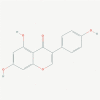Antiparasitic Effects of Selected Isoflavones on Flatworms
- PMID: 33664614
- PMCID: PMC7912234
- DOI: 10.2478/helm-2021-0004
Antiparasitic Effects of Selected Isoflavones on Flatworms
Abstract
Medicinal plants have been successfully used in the ethno medicine for a wide range of diseases since ancient times. The research on natural products has allowed the discovery of biologically relevant compounds inspired by plant secondary metabolites, what contributed to the development of many chemotherapeutic drugs. Flavonoids represent a group of therapeutically very effective plant secondary metabolites and selected molecules were shown to exert also antiparasitic activity. This work summarizes the recent knowledge generated within past three decades about potential parasitocidal activities of several flavonoids with different chemical structures, particularly on medically important flatworms such as Schistosoma spp., Fasciola spp., Echinococcus spp., Raillietina spp., and model cestode Mesocestoides vogae. Here we focus on curcumin, genistein, quercetin and silymarin complex of flavonolignans. All of them possess a whole spectrum of biological activities on eukaryotic cells which have multi-therapeutic effects in various diseases. In vitro they can induce profound alterations in the tegumental architecture and its functions as well as their activity can significantly modulate or damage worm´s metabolism directly by interaction with enzymes or signaling molecules in dose-dependent manner. Moreover, they seem to differentially regulate the RNA activity in numbers of worm´s genes. This review suggests that examined flavonoids and their derivates are promising molecules for antiparasitic drug research. Due to lack of toxicity, isoflavons could be used directly for therapy, or as adjuvant therapy for diseases caused by medically important cestodes and trematodes.
Keywords: antiparasitic effects; cestodes; curcumin; genistein; quercetin; silymarin; trematodes.
© 2021 D. Faixová, G. Hrčková, T. Mačák Kubašková, D. Mudroňová, published by Sciendo.
Conflict of interest statement
Conflict of Interest Authors declare no conflict of interest.
Figures







Similar articles
-
Extracts and Terpenoids from Stevia Species as Potential Anthelmintics for Neglected Tropical Diseases Caused by Cestode Parasites.Molecules. 2024 Sep 18;29(18):4430. doi: 10.3390/molecules29184430. Molecules. 2024. PMID: 39339424 Free PMC article.
-
Antischistosomal properties of aurone derivatives against juvenile and adult worms of Schistosoma mansoni.Acta Trop. 2021 Jan;213:105741. doi: 10.1016/j.actatropica.2020.105741. Epub 2020 Nov 5. Acta Trop. 2021. PMID: 33159900
-
The genus Inula and their metabolites: from ethnopharmacological to medicinal uses.J Ethnopharmacol. 2014 Jun 11;154(2):286-310. doi: 10.1016/j.jep.2014.04.010. Epub 2014 Apr 19. J Ethnopharmacol. 2014. PMID: 24754913
-
Echinococcus metacestodes as laboratory models for the screening of drugs against cestodes and trematodes.Parasitology. 2010 Mar;137(3):569-87. doi: 10.1017/S003118200999117X. Epub 2009 Sep 21. Parasitology. 2010. PMID: 19765346 Review.
-
Safety and nutritional assessment of GM plants and derived food and feed: the role of animal feeding trials.Food Chem Toxicol. 2008 Mar;46 Suppl 1:S2-70. doi: 10.1016/j.fct.2008.02.008. Epub 2008 Feb 13. Food Chem Toxicol. 2008. PMID: 18328408 Review.
Cited by
-
Leishmanicidal and immunomodulatory activities of the formononetin (a natural isoflavone) against Leishmania tropica.BMC Res Notes. 2023 Jun 26;16(1):120. doi: 10.1186/s13104-023-06403-1. BMC Res Notes. 2023. PMID: 37365655 Free PMC article.
-
Chirality Matters: Biological Activity of Optically Pure Silybin and Its Congeners.Int J Mol Sci. 2021 Jul 23;22(15):7885. doi: 10.3390/ijms22157885. Int J Mol Sci. 2021. PMID: 34360650 Free PMC article. Review.
-
Quercetin as a Promising Antiprotozoan Phytochemical: Current Knowledge and Future Research Avenues.Biomed Res Int. 2024 Feb 29;2024:7632408. doi: 10.1155/2024/7632408. eCollection 2024. Biomed Res Int. 2024. PMID: 38456097 Free PMC article. Review.
-
Structural Design, Synthesis and Antioxidant, Antileishmania, Anti-Inflammatory and Anticancer Activities of a Novel Quercetin Acetylated Derivative.Molecules. 2021 Nov 17;26(22):6923. doi: 10.3390/molecules26226923. Molecules. 2021. PMID: 34834016 Free PMC article.
-
Antiparasitic activity of the steroid-rich extract of Schima wallichii against poultry cestode.Vet World. 2024 Jun;17(6):1299-1306. doi: 10.14202/vetworld.2024.1299-1306. Epub 2024 Jun 19. Vet World. 2024. PMID: 39077457 Free PMC article.
References
LinkOut - more resources
Full Text Sources
Other Literature Sources
Miscellaneous
